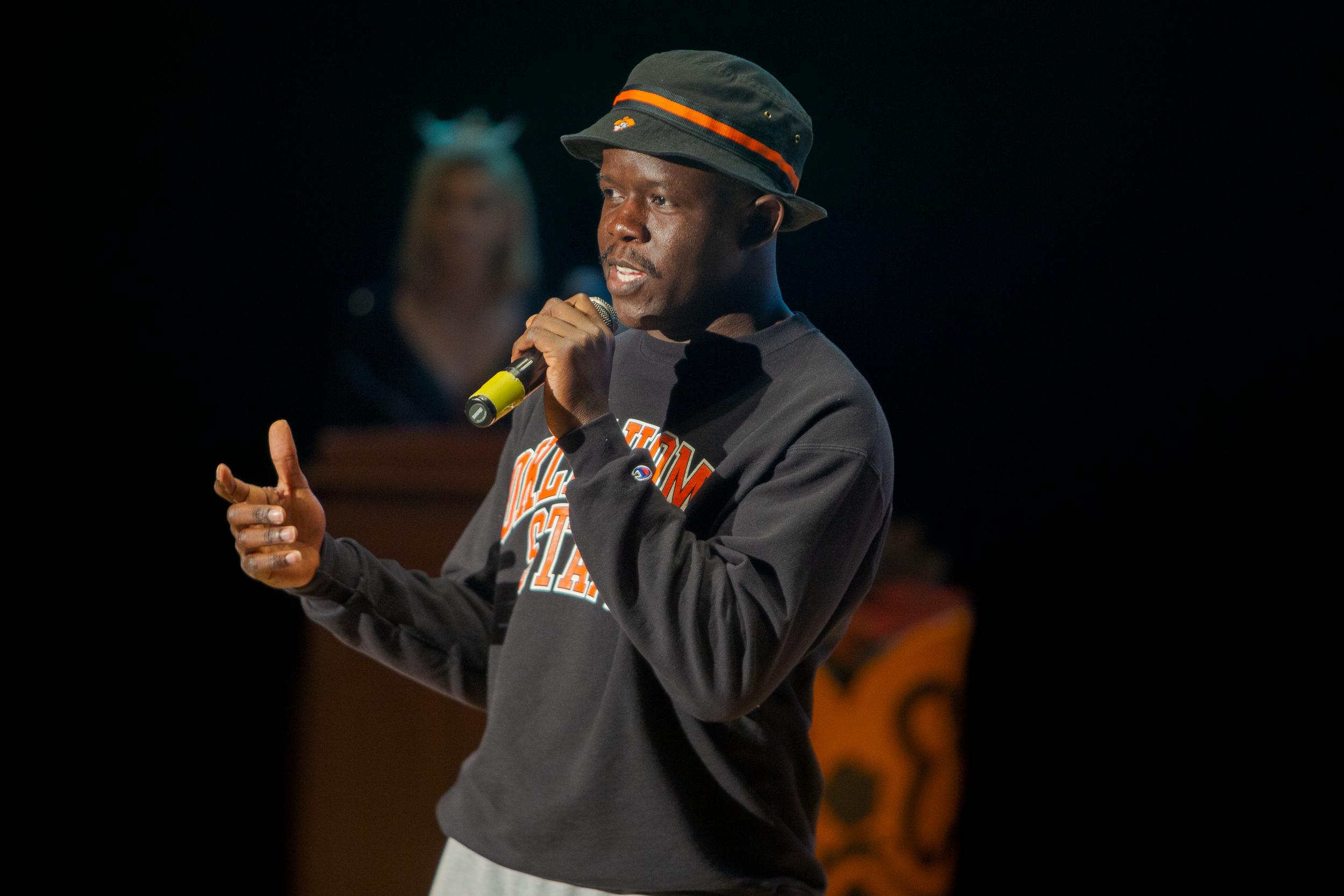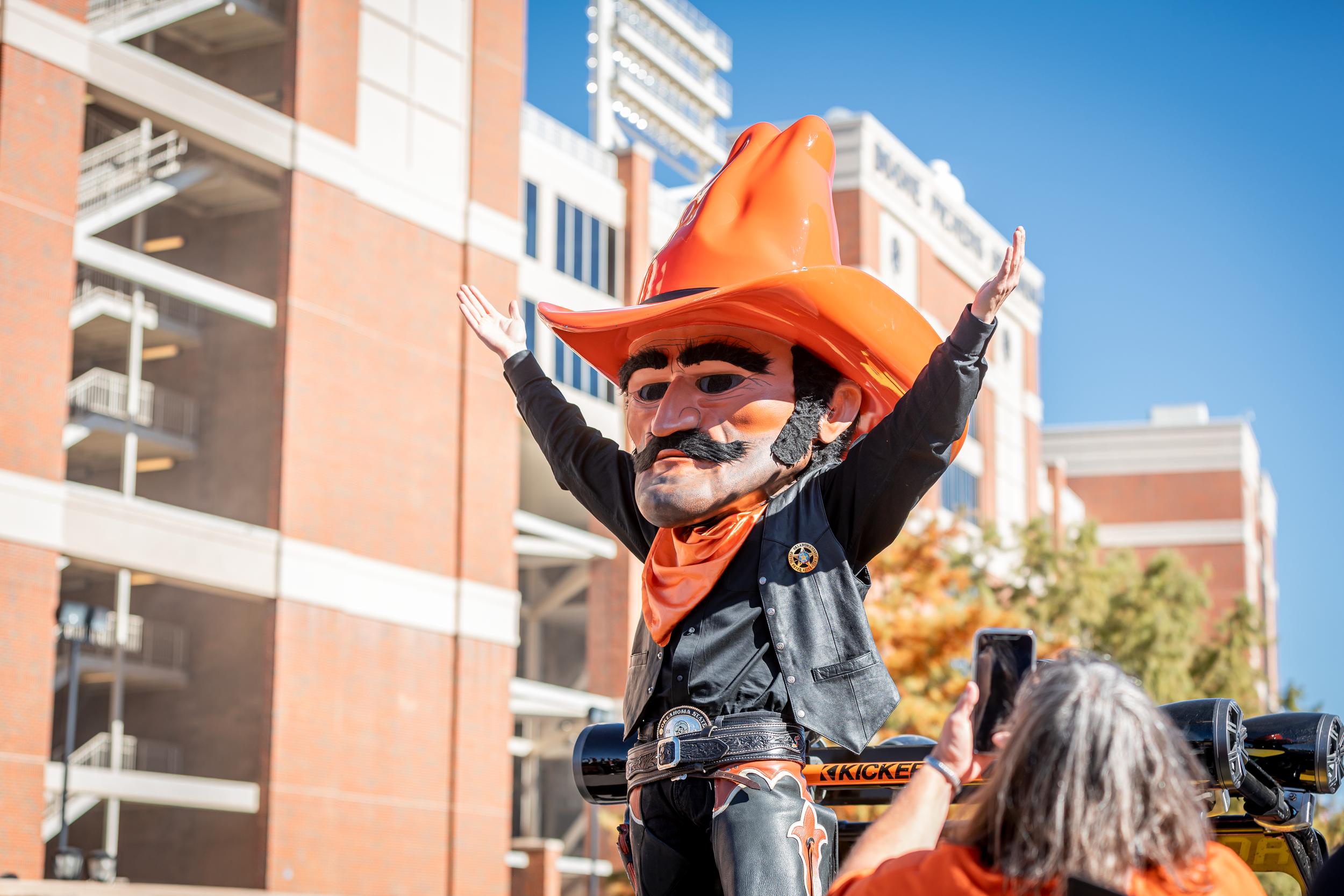10.1 Introductions

“Never lose the first impression which has moved you.” -Jean-Baptiste-Camille Corot
- Capture the audience’s attention.
- Self introduce and establish your credibility/ethos.
- Reveal the topic of the speech through a clear thesis and relate it to the audience.
- Preview the body of the speech by specifically outlining the main points you will cover.
Capture the Audience’s Attention.
Audience members do not attend a presentation with the intention of losing interest or being bored to tears. Truth be told, audience members do not give a speaker a terribly long time to win them over either. You may only have several sentences and, possibly, a chance to actually introduce the topic of the speech before the audience mentally votes “Yes, I want to listen further ” or “No, I’m tuning out and thinking about lunch. ” This opening statement is known as an attention getter.
Depending on the overall time limit of a presentation, an ideal introduction should last no more than around one or two minutes -and this includes your thesis and preview of your main points. This seems like a long time, but in truth, it is not. Hence, you have a short, yet precious window, to lure your audience and hope to keep them there. Here are top attention-gaining strategies to try in your upcoming speeches:

Ask a Question
Ask insightful, meaningful questions. Better yet, ask a series of questions designed to draw the audience further and further into your speech.
When you ask your audience a question, they have to think. In the process of thinking, they are paying attention. Even if your question does not call for an oral reply, they will be thinking what they would answer if called upon.
“How many of you would categorize yourselves as ‘givers’? How many of you search for the perfect Christmas or birthday gift each year for your best friend or perhaps your Mom? You go all out, right? Then, how many of you have signed up to be an organ donor? Isn’t that the ultimate gift? The gift of life?
“How many of you have ever had a couple of glasses of wine while dining with friends, then driven yourself home? Did you ever consider that you might not be “okay ” to make it home? ” Is it possible that you were over the legal limit?
Find a Quotation
It could be a historical quote, a humorous one, even a song lyric. Ensure you credit the originator of the quote. Ensure the quote is relevant to your topic. A word of caution here is to be careful to avoid reading to your audience. If you use a quote, it should be impactful and cause your audience to want to hear more. When used effectively, the quote is relatively short and memorized by the speaker.
“Make sure you have finished speaking before your audience has finished listening. “
– Dorothy Sarnoff
“Courage is being scared to death- but saddling up anyway. “
– John Wayne
Shock the Audience
Use a startling statistic or a shocking statement. Share a personal revelation.
“During the five minutes of my speech, seven individuals will die of AIDS or HIV-related complications in the world. “
“Statistics show that one in every four women will be assaulted in her lifetime. “
“Today, I want to talk to you about a recent loss I’ve had. I lost my best friend, my consoler, my buddy who could always be counted on to party all night. I lost all of that when I finally accepted that I am an alcoholic. Six months ago, I gave up alcohol. “
Find a Direct Connection to the Audience
Reference a local event, place, or activity. Use a recent news story, tragedy, or occurrence that your audience would be sure to recall.
“I’m sure all of you will recall the news story a few months back in which a car went over the Buckman Bridge, sideswiped by a drunk driver. Today, I want to discuss how you can be a defensive driver -and hopefully -save yourself from becoming the next headline. “
Tell a Story
Engage us, draw us in, and make the details of the story vivid and real to us.
“When I was four years old, I became separated from my parents while visiting the zoo. One minute they were there; the next, they were gone. While you might imagine that I was frightened, I wasn’t. I continued to look at the snakes in each display, fascinated. I tagged along with other visitors following the same path, staring in awe at each new exhibit. I certainly didn’t realize then what we all know now. How dangerous the world can be for a child alone. “
If you ever listened to a scary story told by a camp counselor at night when all were sitting near a camp fire, you know the power of a good story. Religious leaders know the power of a good story also. That is why they often include Bible stories in their sermons. Plan to tell your audience a story, and you will have them listening as attentively to you as campers listen to a counselor’s scary story. Use vivid details; paint a mental picture in the minds of your listeners. You want them to relate -to smell the cookies baking, to see the tears in your Grandmother’s eyes, to feel the softness of a baby in your arms.
Find a Compelling Visual Aid
- Poignant, shocking, funny. A picture IS worth a thousand words.
- A photo of a homeless child
- A picture of a crystal clear lake and mountain range
- A cartoon depicting a political news story

Self Introduce and Establish Your Credibility.
An audience may or may not have a preconceived notion about you when you stand before them, but you can bet that your audience will make up its mind about you quickly. Humans are notoriously quick to judge and often form a first impression about a date, a stranger, or a speaker within the first 30 seconds. It becomes imperative, then, for you to introduce yourself and establish your credibility after you have grabbed the audience’s attention. While some in your audience will form a first impression of you based upon your outfit or your smile, most will judge your credibility based upon two crucial factors: your perceived competence and character .
Competence ensures your audience that you know your subject well. You have a strong knowledge base, and you are well prepared to share the topic with your listeners. Reveal your expertise in the introduction, so your audience knows from the beginning that you can be trusted. If you have a special relationship to the topic, either personal or professional or by association, the beginning of your presentation is the time to share that. If you do not have in-depth knowledge of the topic, it’s time to hit the books, access the Internet, or talk with the experts. You have the ability to become a minor expert on most any topic by doing some research. Then ensure that your audience knows of your research; they want to know that your information is valid.
A second component of credibility comes from the audience’s assessment of your character . Can you be trusted? Do you have their best interests at heart? Will the information you provide be useful and relevant to their lives or do you have your own agenda? This aspect of credibility is often referred to as “ethos ” -simply the Greek word for character. A great example is the stereotype of a used car salesman. You need a car, but you are not sure which one is right for you and which one you can really afford. The salesman knows all the necessary information -gas consumption, mileage, and accessories. But you just do not trust that s/he has your best interest at heart. Is s/he trying to get rid of a particular car or make more commission? Is the car you are being shown best for you or best for the salesman? While you feel confident of the salesperson’s competence, you are doubtful of his/her character. It is important that you show your audience that you are credible in both areas (Banks).
Reveal the Topic of the Speech Through a Thesis Statement & Preview the Body of the Speech.
After you grab your audience’s attention and before you reach the actual body of the speech, you will reveal your thesis statement. Remember, a thesis statement is a singular thought that tells the audience what the speech is about. It should be a strong, single, declarative sentence that captures the main point of your presentation. For example, if you are giving an informative speech on how to properly use a fire extinguisher, your thesis may be:
“Knowing how to operate a fire extinguisher by following four simple steps can be beneficial and potentially life saving.”
or
” Using a fire extinguisher can be accomplished by following four simple steps.”
A preview statement is also an important component of your introduction. While many people attempt to combine the thesis and preview statement, it is more thorough to include them as separate distinct items. The preview statement is usually the last sentence of the introduction. The preview is like giving your audience a map for a car trip: They will have an overview of where you will be taking them. It will be easier for them to pay attention as you present your information and it will help them retain the main points of your presentation.
Using the same topic as used above, a preview statement might sound like:
“Today we will cover four specific steps that you should follow when using a fire extinguisher, specifically, pull, aim, squeeze, and sweep, easily remembered by the acronym, PASS.”
Or perhaps it will be spoken this way:
“In our time today, we will discuss how you should pull the pin, aim the nozzle, squeeze the trigger and use a sweeping motion when using a fire extinguisher in an emergency situation.”
Notice that in each case, the speaker laid out the roadmap for what was going to be presented during the presentation. The audience had a framework to fill in when the supporting material was presented.
To prepare yourself, review the main points you intend to cover and write one sentence that previews each of those points, separated by commas. You can also write three shorter sentences and use periods. Beware of going into the details reserved for the main body of the speech while previewing your topic. This will confuse the audience, and they will wonder what else you plan to discuss.

Pistol Pete found himself nestled in a quiet corner of the Edmon Low Library, a notepad in front of him filled with facts, stories, and quotes about Oklahoma State University’s traditions. Now that he had done his research, it was time for Pete to craft a compelling speech. He knew he needed to start with an attention-getter — a memorable opening that would capture the audience’s interest right from the start.
As he racked his brain for ideas, he thought about what defines OSU — the Cowboy spirit, the community, and of course, the traditions. Suddenly, an idea came to him. One of the most loved traditions at OSU was the singing of the alma mater song, with its captivating melody and heartfelt lyrics that captured the spirit of the university.
For his attention-getter, Pete envisioned starting his speech with the powerful strains of the alma mater song playing softly in the background. As the audience recognized the familiar tune, they would be immediately engaged, their attention piqued.
Then, Pete would step onto the stage, and with the music still playing, he would recite the first few lines of the song: “Proud and immortal, Bright shines your name, Oklahoma State, we herald your fame.” As he spoke, the music would fade, leaving the audience with the resonating words and the emotions they stirred.
With this, Pete would have not only caught the attention of his audience but also connected with them on a deeper, emotional level. And most importantly, he would have set the stage for his speech, immersing his audience in the spirit of OSU traditions right from the start.
Feeling a rush of excitement at his idea, Pete jotted it down on his notepad, eager to shape the rest of his speech. He knew that with this attention-getting opener, his audience would be hooked, ready to join him on the journey through OSU’s cherished traditions. What do you think of Pete’s attention getter?
*Pistol Pete scenarios are all based on hypothetical events and were written with the use of Chatgpt and careful editing by Speech Communication faculty.
This resource is available at no cost at https://open.library.okstate.edu/speech2713/
first sentence of a speech that is meant to pull the audience's attention to the speaker and topic at hand
the perception the audience holds of you regarding your competence and character
demonstrated skill or knowledge in a particular area or topic
a person's reputation in regards to trustworthiness and goodness
single, declarative sentence that captures the essence or main point of your entire presentation
a sentence that provides a clear outline of the main points that will be discussed in the presentation

